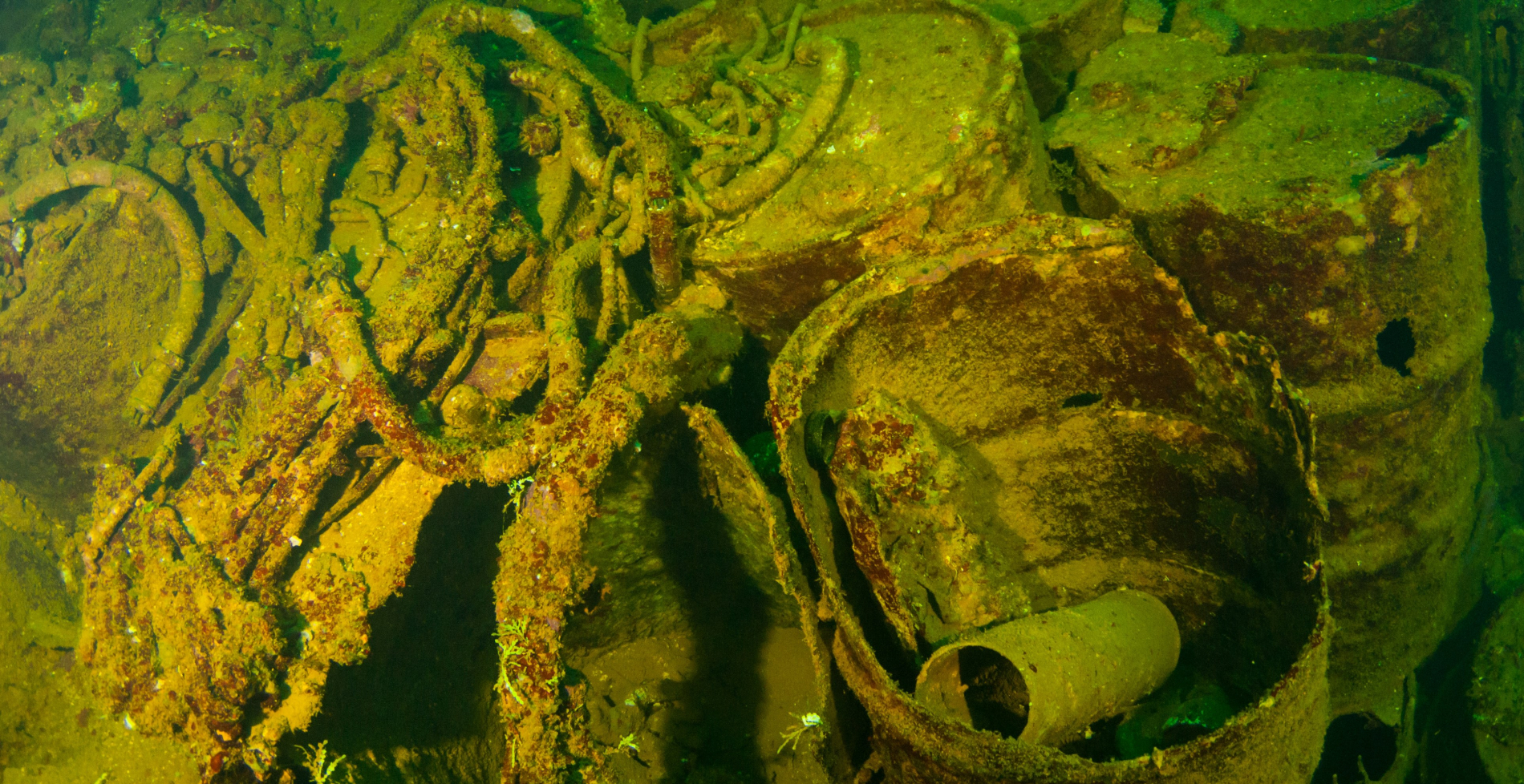YOUR BROWSER IS OUT-OF-DATE.
We have detected that you are using an outdated browser. Our service may not work properly for you. We recommend upgrading or switching to another browser.
Date: 01.08.2024 Category: general news, science/research/innovation

Dawid J. Kramski (photo: Bartosz Grelewski)
Dawid J. Kramski from the Wrocław Tech's Doctoral School has received a grant from the Organisation for the Prohibition of Chemical Weapons (OPCW). Its aim is to test whether common polymers used in 3D printing - after appropriate chemical modification - can be used to remove arsenic deposited in the Baltic Sea.
According to the MARE Foundation, there are around 40,000 tonnes of chemical weapons at the bottom of the Baltic Sea, of which at least 15,000 tonnes are poisonous warfare agents - mainly sulphur iperite or arsenic, but also Clark I, Clark II, adamsite, chloroacetophenone and tabun. Added to this is the difficult-to-estimate amount of conventional weapons (aerial bombs and mines).
Areas of chemical weapons dumping (fundacjemare.pl material)
Beldowski et al, 2016
How did this poisonous cargo end up at the bottom of the Baltic Sea? According to the agreements of the Potsdam Conference (July-August 1945), Soviet soldiers were supposed to deliver all the war remnants to the Gotland Deep (central Baltic area). However, many tonnes of transported materials were dropped by the Russians earlier, in random places. The wooden crates drifted on the sea, and when they decayed, their contents settled to the bottom of the basin.
The Bornholm Deep (Soviet documents mention some 40,000 tonnes of weapons at a depth of 100 metres) and also the Gdansk Deep (near the Hel Peninsula) are particularly rich in remains.
Scientists, the military and various organisations have been grappling with the problem for years, trying to find a way to neutralise the deadly cargo. In February 2024, the project ‘MUNIMAP: Baltic Sea Munition Remediation Roadmap’ was launched, which will describe the entire remediation process, including the appointment of those responsible for finding the munitions, assessing their impact on the environment, and extracting and destroying the environmentally threatening shells.
A project by our doctoral student Dawid Kramski, who has just received a grant from the international Organization for the Prohibition of Chemical Weapons (OPCW, Organization for the Prohibition of Chemical Weapons), can be of great support to these efforts. The OPCW is the implementing body of the Chemical Weapons Convention, which entered into force on April 29, 1997. Headquartered in The Hague, the organization brings together 193 countries from around the world and is responsible for implementing international regulations governing the elimination of the world's chemical weapons stockpiles. For its work, the OPCW was awarded the Nobel Peace Prize in 2013.
Our doctoral student's project “Arsenic removal from the Baltic Sea on modified 3D printed structure” has received funding of 30,000 euros as part of the OPCW's grant program supporting research in the peaceful use of chemistry in the organization's member states.
- World War II-era chemical weapons dumps are a significant source of arsenic in waters and bottom sediments. Arsenic, derived from decaying chemical weapons, is a serious threat to the marine ecosystem and human health, stresses Dawid Kramski of our Ph.D. School, who in his project wants to propose an innovative approach for the disposal of dumped war waste.

He came up with the idea to produce and test a material for removing toxins, printed on a 3D printer, during the research he is conducting for his doctoral thesis. In it, he deals with the topic of heavy metal removal on modified structures 3D printed from polymeric materials.
- My concept is to obtain an optimal structure, e.g.: a filter, printed on a 3D printer from commonly known and used polymers (e.g.: PLA, ABS, PTGE, PC). Their advantages are that they are both readily available and cheap to obtain,” explains our PhD student.
The next step in his project will be to chemically modify the surface of the print so that it acquires sorptive properties. Here, the key will be for the young Wrocław Tech researcher to develop a method so that the resulting structure has an affinity for specific pollutants (i.e., “captures” them), or in the case of his grant, arsenic.
- Suitable properties of the material will result in intervening or permanent absorption of marine contamination, which I believe is an attractive alternative to the methods used so far, which involve extracting and destroying sunken chemical weapons,” explains Dawid Kramski.
The two-year project received recommendations from the Ministry of Foreign Affairs and the Ministry of Development. It emphasized the innovativeness of the research to eliminate the consequences of the sinking of chemical weapons in the Baltic Sea.
This is the second research grant awarded by the OPCW to a scientist from the Wrocław University of Science and Technology (Prof. Izabela Michalak from the Faculty of Chemistry received the grant in 2021), and also the first for a Polish doctoral student.
Our site uses cookies. By continuing to browse the site you agree to our use of cookies in accordance with current browser settings. You can change at any time.